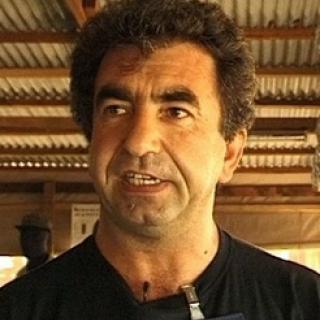Salahuddin Ramez was born on 11 July 1952 in Herat, western Afghanistan. He attended primary and secondary school in the city from 1958 to 1971. The following year he moved to Berlin, Germany, where he studied medicine at the city’s Free University from 1974 to 1981. After qualifying as a doctor, he worked from 1981 to 1985 as an assistant and ward surgeon in Wittmund district hospital, on Germany’s North Sea coast, training in general surgery and traumatology.
“Salah”, as he was known, returned to Afghanistan in 1985 and became chief surgeon in the orthopaedic and traumatology unit at Wazir Akbar Khan Hospital, Kabul. It was a position he would hold until 1993. During this period, he pursued additional training in orthopaedic surgery. He also attended courses in Darmstadt, Ulm and Bochum, Germany, where he expanded his skills in the treatment of fractures. In 1988, in tandem with his role at Wazir Akbar Khan Hospital, Salah began work as a staff doctor, surgical adviser and consultant with the ICRC delegation in Afghanistan. This was mainly at the ICRC-supported Karte Seh Surgical Hospital in Kabul, where he later became chief surgeon (1993–1995). Salah was someone who was always on the go – dynamic, positive and in demand. In parallel with his other work, he also advised the Afghan Red Crescent Society (1991–1995). In 1995 Salah left Afghanistan to spend six months at the ICRC surgical hospital in Quetta, Pakistan, initially as chief surgeon and then as team surgeon. His tasks included improving surgical services, teaching and training local surgeons, and giving seminars on war surgery.
He returned to Afghanistan and his hometown of Herat, where he planned to open a small hospital offering free treatment to patients in need of reconstructive surgery. But the project was ultimately blocked by the authorities. Salah then successfully applied for a full-time job with the ICRC and was posted to Kibuye, Rwanda, where he worked as a surgeon from September 1998 to April 1999. His positivity and dynamism energized the surgical team, who were having to manage a heavy workload. Salah was a patient leader and mentor, sharing his knowledge and skills with the rest of the team and local staff. He was also a good communicator. As one colleague noted: “He learnt French and Kinyarwanda as quickly as he stitched a wound.”
After Rwanda, Salah was posted to Sudan, from May to December 1999, where he was based at Juba Teaching Hospital. Colleagues described him as an excellent surgeon who built a good rapport with the hospital’s patients and staff. His next ICRC assignment was to Dili General Hospital in East Timor, from December 1999 to April 2000, where he was often the only surgeon available. Salah then returned to Africa, working as a surgeon in an ICRC-funded hospital in Kenema, eastern Sierra Leone. In early July 2000, Salah fell ill while visiting his wife and daughter in Leiden, the Netherlands. He was taken to hospital and diagnosed with Lassa fever, an acute viral illness endemic to Sierra Leone. Salah died in Leiden University Hospital on 25 July. He was 48.
Salah was hugely committed to his work as a doctor, surgeon and humanitarian. As a young doctor, he left Europe to return to war-torn Afghanistan, where he knew his skills were desperately needed – skills he would later put to great use in other conflict zones around the world.
